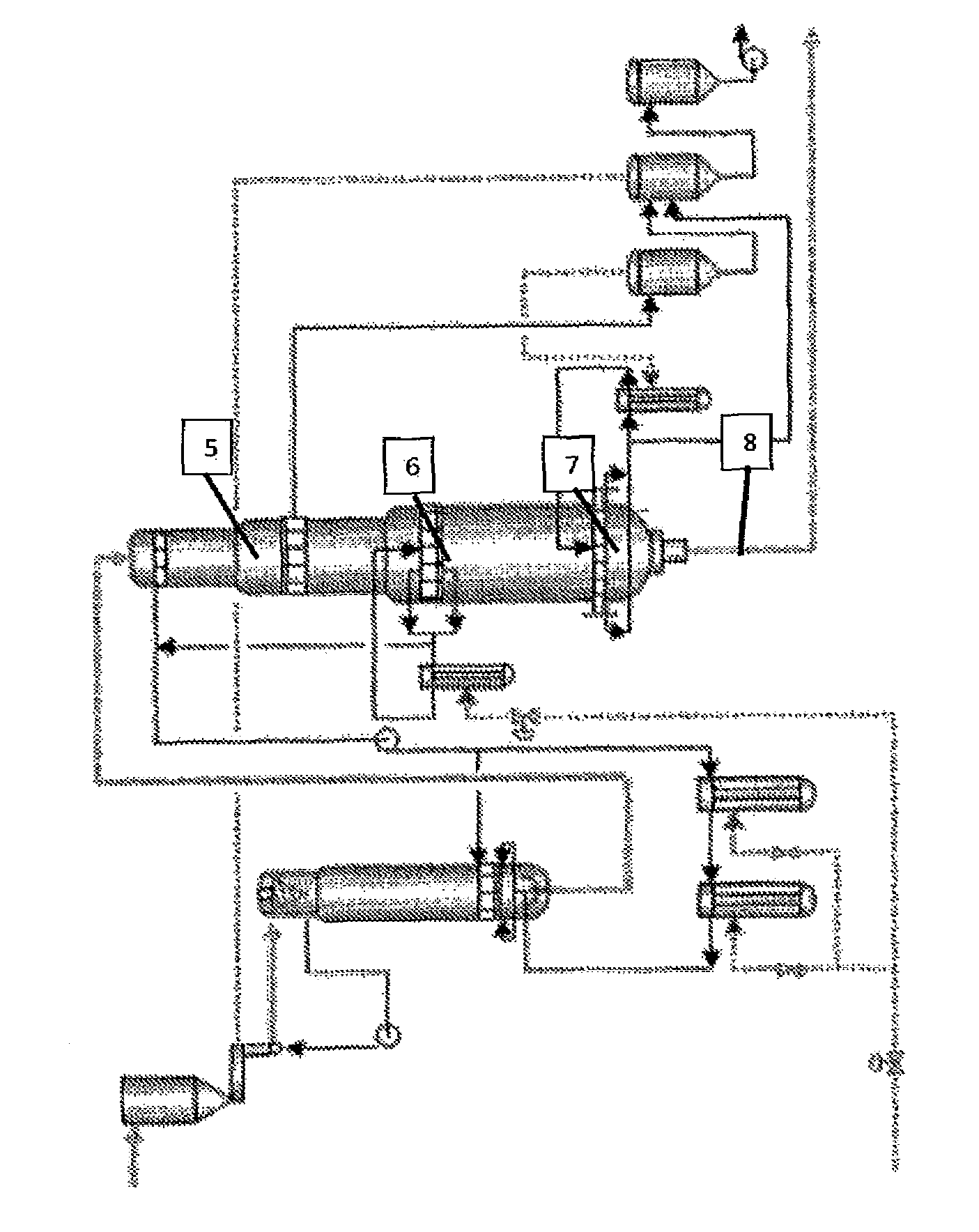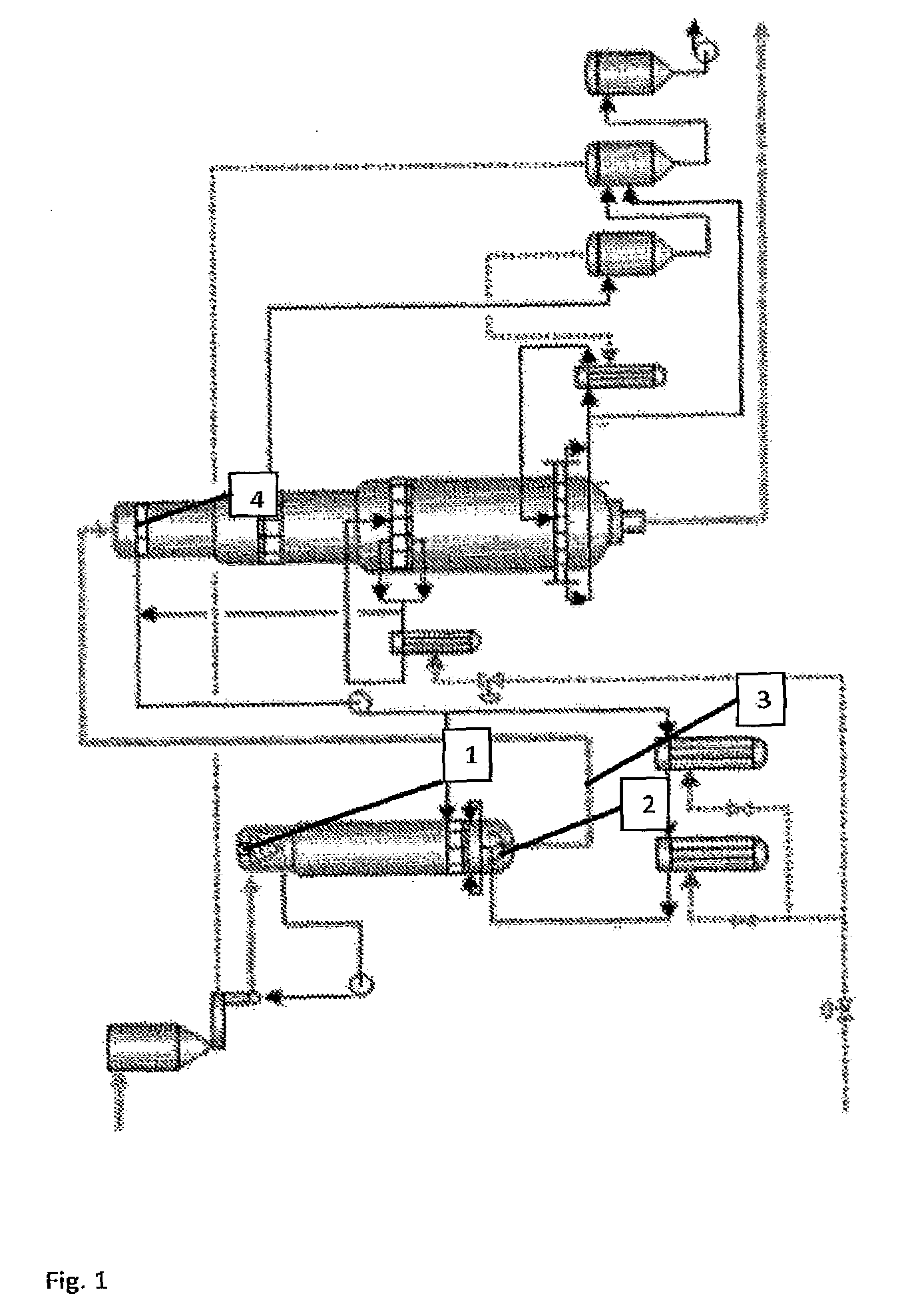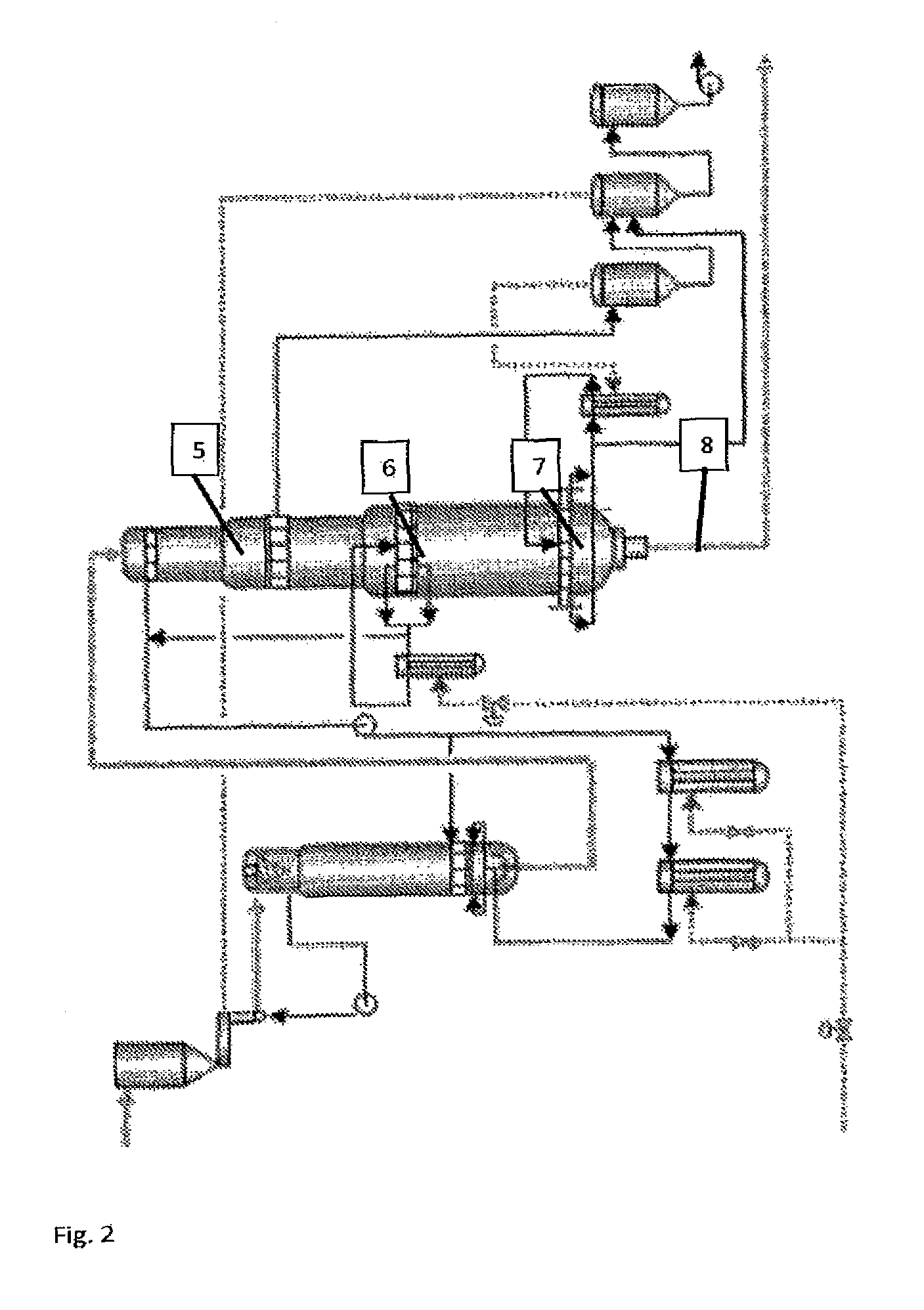Method of processing chemical pulp
a technology of chemical pulp and processing method, which is applied in the field of processing chemical pulp, can solve the problems of reducing the bleaching efficiency, increasing the amount of water and energy in these processes, and the method of this disclosure also failing, so as to improve the bleaching efficiency, reduce the chemical consumption of bleaching, and enhance the washing of fibers
- Summary
- Abstract
- Description
- Claims
- Application Information
AI Technical Summary
Benefits of technology
Problems solved by technology
Method used
Image
Examples
example 1
[0080]In this example eucalyptus wood pulp was produced according to an embodiment wherein top separator of continuous digester in position 5 was applied. The surfaces of the screw were equipped with segmented plates for shearing action (as presented in FIG. 4). This dimensioning of the equipment can be done by anyone who is expert in the field. Same effect can be achieved at positions 6, 7 and 8 of FIG. 2 and in the position 8 of FIG. 3, with the same equipment as presented above. Typical conditions in these positions are: temperature 140° C.-200° C. and alkali charge as effective alkali as Na2O of about 20%. The energy applied is 10-100 kWh / t. The cooking results are presented in the Table 1.
[0081]
TABLE 1REF eucalyptusMethod applied in position 5Analysispulpfor eucalyptus pulpKappa number1817.8Cooking yield, %53.253Viscosity, ml / g13401315
[0082]The above results confirm that the method does produce same cooking yield and viscosity of the pulp cooked from same raw material.
example 2
[0083]In this example was shown the pulp properties produced from hardwood (eucalyptus) when the method was applied in the position 5. The results are shown in Table 2 in comparison to pulp produced from same raw material without the method (control sample noted as REF). Porosity is determined as AFM. The results are given as pore area [nm2], water retention value, WRV [g / g] and Schopper-Riegler number (SR).
[0084]
TABLE 2REF eucalyptusMethod applied in position 5Analysispulpfor eucalyptus pulpPore area (AFM), nm2800016000WRV, g / g2.091.72SR2016
[0085]The above results confirm that the method increases the pore area and decreases water retention value and SR number.
example 3
[0086]In this example eucalyptus wood pulp was produced according embodiments applying the method in position 2 of FIG. 1. Typical conditions in these positions are: temperature 50° C.-150° C. and alkali charge as effective alkali 15%. The cooking results are presented in Table 3.
[0087]
TABLE 3Method applied in position 2AnalysisREF eucalyptus pulpfor eucalyptus pulpKappa number18.218.0Cooking yield, %5353.2Viscosity, ml / g13001280
[0088]The above results confirm that the method does produce same cooking yield and viscosity of the pulp cooked from same raw material.
PUM
| Property | Measurement | Unit |
|---|---|---|
| temperature | aaaaa | aaaaa |
| temperature | aaaaa | aaaaa |
| temperature | aaaaa | aaaaa |
Abstract
Description
Claims
Application Information
 Login to View More
Login to View More - R&D
- Intellectual Property
- Life Sciences
- Materials
- Tech Scout
- Unparalleled Data Quality
- Higher Quality Content
- 60% Fewer Hallucinations
Browse by: Latest US Patents, China's latest patents, Technical Efficacy Thesaurus, Application Domain, Technology Topic, Popular Technical Reports.
© 2025 PatSnap. All rights reserved.Legal|Privacy policy|Modern Slavery Act Transparency Statement|Sitemap|About US| Contact US: help@patsnap.com



